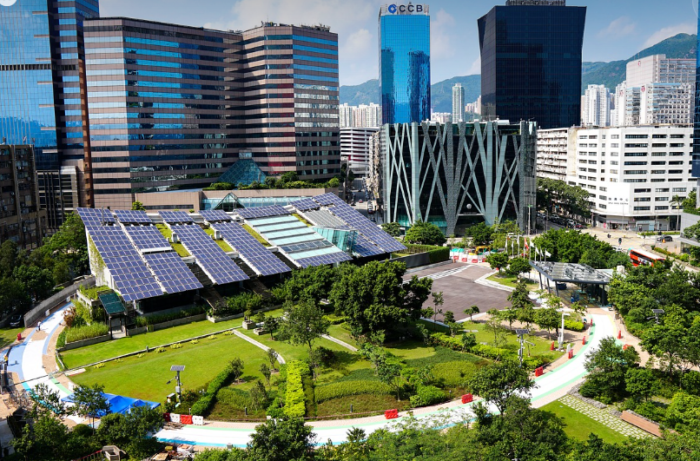The 5 Key Qualities of a Sustainable City
Understanding the Drivers and Obstacles

What should a sustainable city be like? To be identified as a sustainable city, there have to be several notable characteristics. Here are five of the key features that distinguish a sustainable city:
1. Energy-Efficient Buildings
Sustainable cities prioritize the construction of energy-efficient buildings, including green buildings and passive houses. These structures are designed to minimize energy consumption and reduce carbon emissions through advanced insulation, energy-efficient windows, and the use of sustainable materials. Many sustainable cities also provide incentives or subsidies to retrofit existing buildings with green roofs, solar panels, and other energy-efficient upgrades, further enhancing their environmental performance.
2. Efficient Transit
Transportation plays a crucial role in the sustainability of a city. Sustainable cities develop comprehensive transit systems that include bicycle lanes, pedestrian-friendly infrastructure, and public transit solutions powered by renewable energy sources. This includes biofuel or electric buses, maglev trains, and electric taxis. By promoting alternative transportation methods and reducing reliance on fossil fuels, these cities can significantly cut down on greenhouse gas emissions and improve air quality.
3. Green Spaces
The integration of green spaces is another vital characteristic of sustainable cities. Parks, gardens, and urban forests not only enhance the aesthetic appeal of urban areas but also provide essential environmental benefits. Green spaces help improve air quality by filtering pollutants, mitigate the urban heat-island effect by providing shade and cooling, and support biodiversity by offering habitats for various species. Additionally, these areas offer recreational spaces for residents, promoting physical activity and mental well-being.
4. Sustainable Waste Management
Effective waste management is critical for sustainability. Sustainable cities implement comprehensive waste reduction, reuse, and recycling programs to minimize the amount of waste sent to landfills. This involves encouraging residents to recycle materials such as paper, plastic, and glass, compost organic waste, and reduce overall consumption. By managing waste sustainably, cities can reduce their environmental footprint and conserve valuable resources.
5. Social Equity
A truly sustainable city ensures social equity, providing all residents with access to basic services like clean water, sanitation, healthcare, and nutritious food. This commitment to equity helps create a healthy, thriving community and fosters social cohesion. Sustainable cities also strive to provide affordable housing, quality education, and employment opportunities, reducing inequalities and enhancing the overall quality of life for all citizens.
Examples of sustainable cities and communities, such as those mentioned, have successfully implemented these characteristics and others to create more sustainable and livable environments for their residents.
Sustainable Cities and Communities: Problems and Solutions
Challenges faced by sustainable cities and communities in their efforts to reduce environmental impact and promote social equity include:
1. Limited Public Awareness
A significant challenge for sustainable cities is raising public awareness about the importance of sustainability and how individuals can contribute to these efforts. Many residents may not fully understand the benefits of sustainable practices or how to implement them in their daily lives. Education and awareness campaigns are crucial to engage the community and foster a culture of sustainability.
2. Insufficient Funding
Implementing sustainability projects often requires substantial financial investments. Many cities and communities struggle with limited budgets and competing priorities, making it challenging to allocate sufficient funds for sustainability initiatives. Securing funding from government grants, private investments, and public-private partnerships is essential to support these projects.
3. Inadequate Infrastructure
Robust infrastructure is the backbone of a sustainable city. However, many cities lack the necessary infrastructure, such as accessible public transportation, comprehensive bicycle networks, and renewable energy systems. Investing in infrastructure development is vital to create a foundation for sustainable growth and to support the transition to more sustainable practices.
4. Limited Access to Resources
In some areas, especially in developing regions, cities and communities may face a lack of essential resources like clean water, healthcare, and proper sanitation. Addressing these basic needs is fundamental to achieving sustainability and ensuring the well-being of all residents. Efforts must be made to improve access to these critical resources through infrastructure development and community programs.
To address these problems, sustainable cities and communities require solutions that prioritize environmental sustainability and social equity. These solutions may involve:
- Public Awareness Campaigns: Educating residents about sustainable practices and their benefits can increase community engagement and participation. Workshops, seminars, and media campaigns can help spread awareness and encourage behavior change.
- Partnerships Between Public and Private Organizations: Collaborations between government agencies, private companies, and non-profit organizations can provide the necessary resources and expertise to implement sustainability projects. Public-private partnerships can drive innovation and investment in sustainable infrastructure and programs.
- Sustainable Infrastructure Development Initiatives: Investing in infrastructure that supports sustainability is crucial. This includes developing renewable energy systems, expanding public transportation networks, and creating green spaces. Such investments not only improve environmental performance but also enhance the quality of life for residents.
Ultimately, implementing sustainable cities and communities solutions requires a thorough investigation of the challenges they face and the development of targeted strategies to overcome these obstacles. By addressing both environmental sustainability and social equity, cities can create more resilient, livable, and thriving communities for current and future generations.
Reference: Rheaply, a technology company specializing in the development of sustainable cities